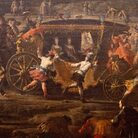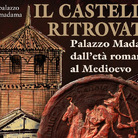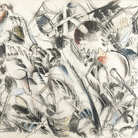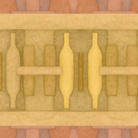Infrastructure: The City as Negotiation between Nature and Power - Conferenza

© Wikimedia Commons | Palazzo Barbarigo della Terrazza, Venezia
Dal 16 June 2017 al 17 June 2017
Venezia
Luogo: Centro Tedesco di Studi Veneziani - Palazzo Barbarigo della Terrazza / Palazzo Trevisan degli Ulivi
Indirizzo: San Polo 2765/a Calle Corner
Enti promotori:
- eikones NCCR Iconic Criticism
- Deutsches Studienzentrum in Venedig and Pro Helvetia
Telefono per informazioni: 041 5206355
Sito ufficiale: http://www.dszv.it
Infrastructure is a matter of shared concern, a politics in physical form. Tunnels, canals, dams, bridges and fountains – types of infrastructure are easy to enumerate, but their collective effect is more difficult to circumscribe. Contemporary discussions of urbanism favour a consideration of cities as networked entities. However these entities exist against the backdrop of natural constraints that play more than a merely passive role in its fate. The network has its nodes, but its topology ultimately fails to dematerialise the landscape. The railway bridge, for instance, does not merely connect two locations, A to B (and back again), but is also a negotiation between nature and power, between the law and the weather, engineering and gravity. Furthermore, infra-structure almost invariably represents the outcome of a contest between collective interests and private property. Infrastructure presents the history of both the struggles and dependencies between nature and power, and between individuals and groups, in concrete form.
The study of infrastructure is, in multiple senses, central to urbanism. In terms of function, financing, and scale, infrastructure cannot be understood in terms of individual agency. The capital concentrations necessary for the creation of infrastructural projects are beyond the means of the private citizen. In the now classic example of the “Deichgenossenschaft,” Ferdinand Tönnies argued that the shared effort of the construction and maintenance of dikes created the communal basis for Dutch society in the late middle ages. Tönnies argument can be read as a hydropolitical reflection on Hegel’s famous description of the tower of Babylon as a failed attempt at national unification: “it was built in common, and the aim and content of the work was at the same time the community of those who constructed it.” It is not merely that the community comes together to build infrastructure at its centre, but rather, that the building of infrastructure organises a community around it. At best, infrastructure is not merely a service provider, but becomes the basis for new kinds of social interdependency.
Concept: Adam Jasper and Stefan Neuner
Program
Friday, June 16
57th International Art Exhibition, Gardini
10.30 Visit to the Swiss Pavilion with the artists Teresa Hubbard / Alexander Birchler
----
Deutsches Studienzentrum in Venedig
Palazzo Barbarigo della Terrazza
Chair: Adam Jasper
13.00 Welcome and Introduction
13.15 Hannah Baader:
Liquidity and the Infrastructures of Materiality. Ligozzi, Gaffuri and the Harbour of Livorno.
14.00 Milica Topalovic:
Earthworks: Rethinking Land in the Century of Flattening.
14.45 Coffee Break
15.15 Philip Ursprung and Teresa Hubbard / Alexander Birchler:
A Conversation on the Film Installation “Flora” (2017)
16.00 Adrian Lahoud:
The Number of Hours
16.45 Maarten Delbeke:
The Final Cut. Water for VersaillesThrough Eure et Loir.
----
Excursion to Porto Marghera with architect Sandro Bisà
----
Saturday, June 17
Palazzo Trevisan degli Ulivi
Chair: Stefan Neuner
10.00 Sulgi Lie: Infra / Structural Slapstick. On Comic Metonymies.
10.45 Antonia von Schöning: Infrastructures and the Technical Imaginary. The Parisian Underground in the 19th Century.
11.30 Coffee Break
12.00 Barbara Berger: The Venetian Gasholders: Symbol of Progress or Decay?
12.45 Markus Krajewski: Between Structure and Infrastructure. A Brief History of the Flow Chart.
SCARICA IL COMUNICATO IN PDF
COMMENTI

-
 Dal 20 December 2025 al 20 April 2026
Caserta | Reggia di Caserta
Dal 20 December 2025 al 20 April 2026
Caserta | Reggia di Caserta
Regine: trame di cultura e diplomazia tra Napoli e l’Europa
-
 Dal 19 December 2025 al 23 March 2026
Torino | Palazzo Madama - Museo Civico d’Arte Antica
Dal 19 December 2025 al 23 March 2026
Torino | Palazzo Madama - Museo Civico d’Arte Antica
Il castello ritrovato. Palazzo Madama dall’età romana al medioevo
-
 Dal 17 December 2025 al 19 January 2026
Roma | Palazzo della Cancelleria
Dal 17 December 2025 al 19 January 2026
Roma | Palazzo della Cancelleria
De Humana Mensura di Linda Karshan
-
 Dal 18 December 2025 al 12 April 2026
Firenze | Gallerie degli Uffizi
Dal 18 December 2025 al 12 April 2026
Firenze | Gallerie degli Uffizi
Cera una volta. Sculture dalle collezioni medicee
-
 Dal 11 December 2025 al 9 April 2026
Firenze | Museo Archeologico Nazionale di Firenze
Dal 11 December 2025 al 9 April 2026
Firenze | Museo Archeologico Nazionale di Firenze
Icone di Potere e Bellezza
-
 Dal 11 December 2025 al 11 January 2026
Roma | Palazzo Esposizioni Roma
Dal 11 December 2025 al 11 January 2026
Roma | Palazzo Esposizioni Roma
Giorgio Morandi nella Collezione Eni. Un viaggio attraverso la storia culturale del cane a sei zampe e l’eredità di Enrico Mattei


